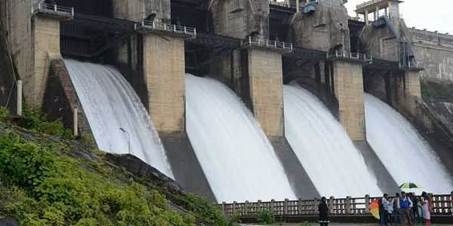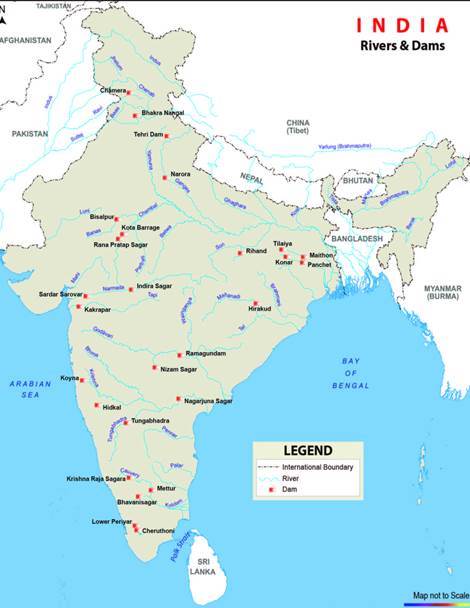Description

Disclaimer: Copyright infringement not intended.
Context
- Dhar Dam built on the Karam river, a tributary of the Narmada, threatened to flood 18 villages due to leakage. But the risk has been averted now.
Dam safety need of the hour:
- Union Jal Shakti Minister informed the parliament that nearly 40 dams have collapsed in India since Independence. Dam collapsed, resulting in the loss of thousands of lives.
- There are more than 5700 large dams in India, of which nearly 300 are over 100 years old, and around 1,100 dams are between 50 and 100 years old.
- In addition to large dams, there are thousands of medium and small dams, and the population growth is becoming a serious challenge for water security.
- Utilization of dam Water has become a core issue of disputes between various State Governments.
- Dams play a key role in the development of the country, also provide water during non-monsoon sessions, and ensure food and energy security.
- According to the Central Water Commission (CWC), the aging of dam assets poses a serious concern related to the sustainability of food and energy security of the country and could create water scarcity in large parts of India.
- Safety of dams is important for protecting public investment, and also for ensuring continuity of benefits derived from dam projects

Dam Safety Act, 2021
- The Dam Safety Act was enacted by Parliament in 2021.
- The main objective of the act is to provide a mechanism for the surveillance, inspection, operation, and maintenance of all specified dams across the country.
- The Act constitutes 2 National bodies:
- The National Committee on Dam Safety.
- National Dam Safety Authority.
- It also constitutes 2 State bodies:
- State Committee on Dam Safety.
- State Dam Safety Organization.
- These state-level bodies are responsible for the surveillance, inspection, and monitoring of the operation and maintenance of dams within their jurisdiction.
- The functions of the National Committee on Dam Safety;
- Developing policies and recommending regulations regarding dam safety standards in India.
- The function of the National Dam Safety Authority;
- To implement the policies of the National Committee on Dam Safety.
- To provide technical assistance to State Dam Safety Organizations (SDSOs).
- Resolving matters between SDSOs of states or between an SDSO and any dam owner in that state.
- An offence can lead to imprisonment of up to 2 years, a fine, or both.
- The Act applies to all specified dams built on both inter and intra-state rivers.
- Dam owners will be liable for the safe construction, operation, maintenance and supervision of a dam. They need to provide a dam safety unit in each dam.
- The Dam safety unit will inspect the dams:
- Before and after the monsoon season.
- During and after every earthquake, flood, calamity, or any sign of distress.
- They will prepare an emergency action plan.
- They will conduct risk assessment studies at regular intervals.
- They will prepare a comprehensive dam safety evaluation.
Significance of Dams
- Dams act as an artificial barrier to rivers.
- They are used to store river water and help in irrigation, power generation, flood moderation, and water supply.
- Dams higher than 15 m or between 10 m and 15 m in height and fulfil certain conditions are called large dams.
- They are mainly operated by states; a few of them are under central public sector undertakings and private agencies.
- As a large amount of river water is stored behind a dam, and its failure can cause large-scale damage to life and property. Therefore, it is essential to monitor the safety of the dam safety is essential.

https://www.downtoearth.org.in/news/water/dhar-dam-leak-averted-for-the-time-being-but-questions-remain-84333











